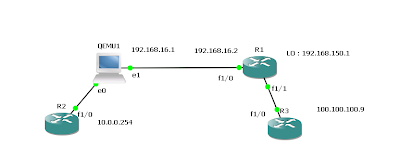IEEE P802.3az Energy Efficient Ethernet
Energy Efficient concept move from data centers to servers CPU and finally come up to the Ethernet controller level. I didn't want to read the IEEE standard ( i don't have capability to understand the content ). but in future drivers will interact to provide the dynamic negotiation of the bandwidth over the Ethernet, when the link idle it tries to save the power.
Relevant resources:
Overall intro :
http://www.nanog.org/meetings/nanog50/abstracts.php?pt=MTY0NCZuYW5vZzUw&nm=nanog50
IEEE working group:
http://www.ieee802.org/3/az/public/
One more tutorial :
http://www.ieee802.org/802_tutorials/07-July/IEEE-tutorial-energy-efficient-ethernet.pdf
Interesting concepts :
Desktop-to-switch links
– Are mostly idle
• Lots of very low bandwidth “chatter”
– High bandwidth needed for bursts
• Bursts are often seconds to hours apart
• Server links are also often not fully utilized
– Higher speed links offer more opportunity to save energy
– This is an area where more data is needed
• Evidence of low utilization (desktop users)
– LAN link utilization is generally in range 1 to 5% [1, 2]
– Utilization for “busiest” user in USF was 4% of 100 Mb/s
Asus's calming they are the first one :)
Relevant resources:
Overall intro :
http://www.nanog.org/meetings/nanog50/abstracts.php?pt=MTY0NCZuYW5vZzUw&nm=nanog50
IEEE working group:
http://www.ieee802.org/3/az/public/
One more tutorial :
http://www.ieee802.org/802_tutorials/07-July/IEEE-tutorial-energy-efficient-ethernet.pdf
Interesting concepts :
Desktop-to-switch links
– Are mostly idle
• Lots of very low bandwidth “chatter”
– High bandwidth needed for bursts
• Bursts are often seconds to hours apart
• Server links are also often not fully utilized
– Higher speed links offer more opportunity to save energy
– This is an area where more data is needed
• Evidence of low utilization (desktop users)
– LAN link utilization is generally in range 1 to 5% [1, 2]
– Utilization for “busiest” user in USF was 4% of 100 Mb/s
Asus's calming they are the first one :)



Comments